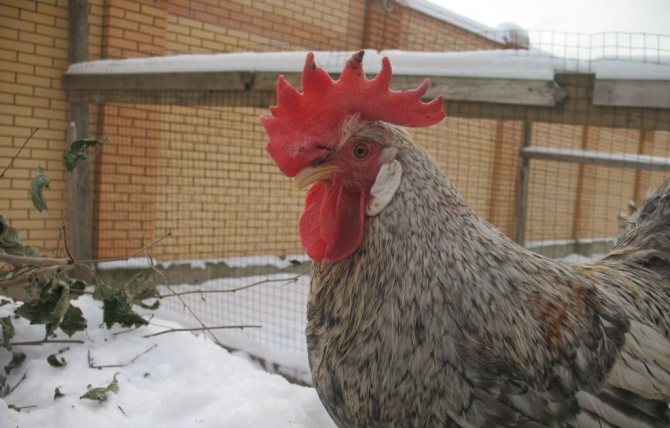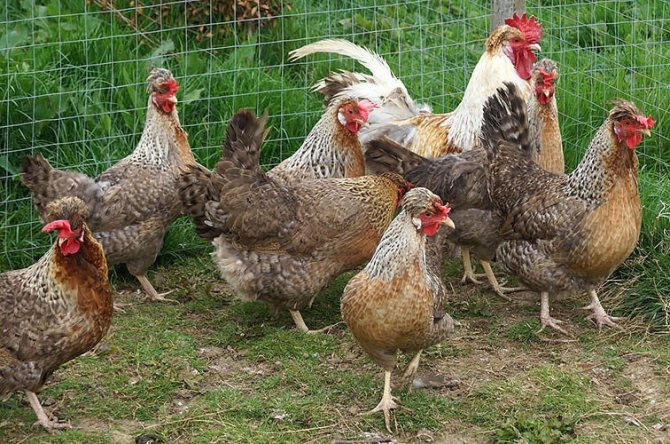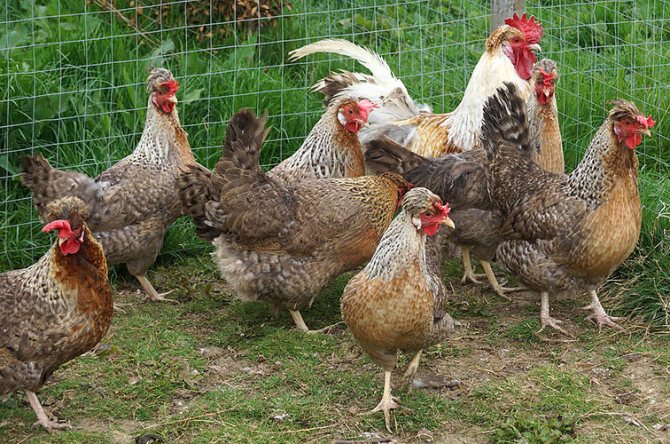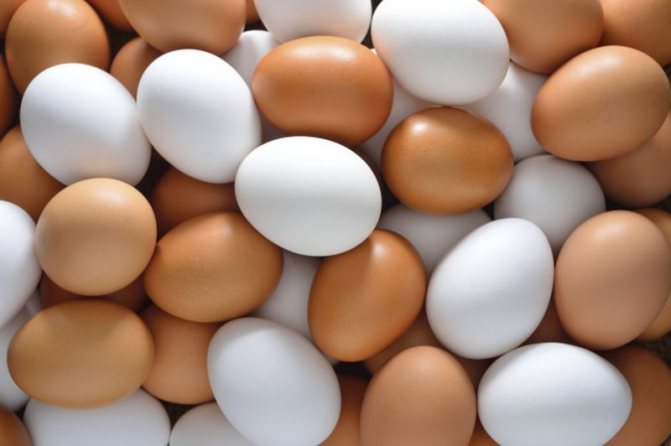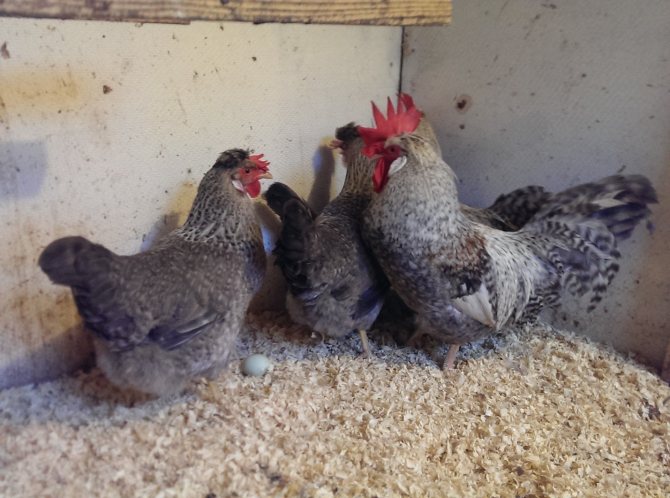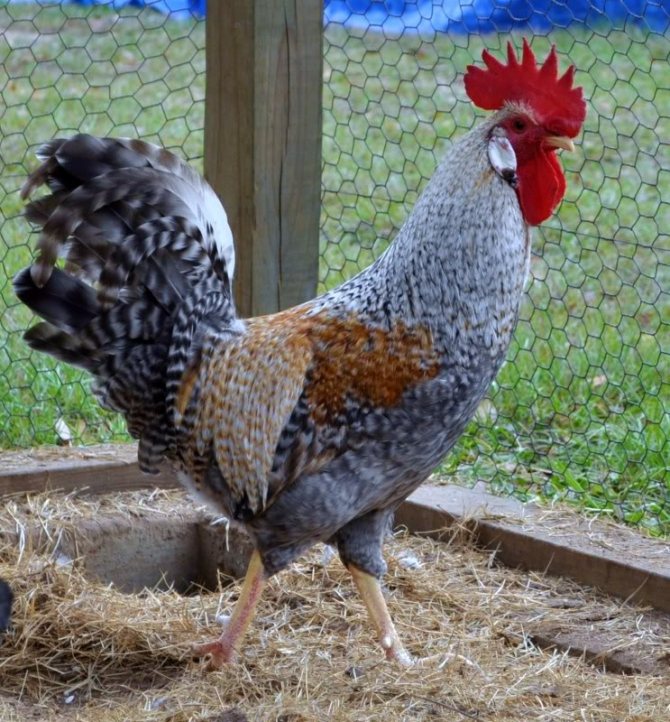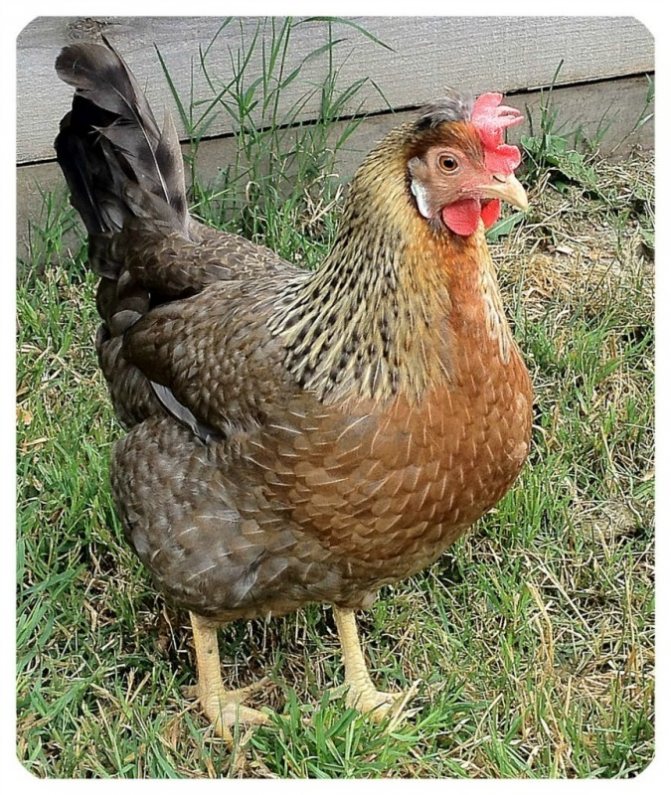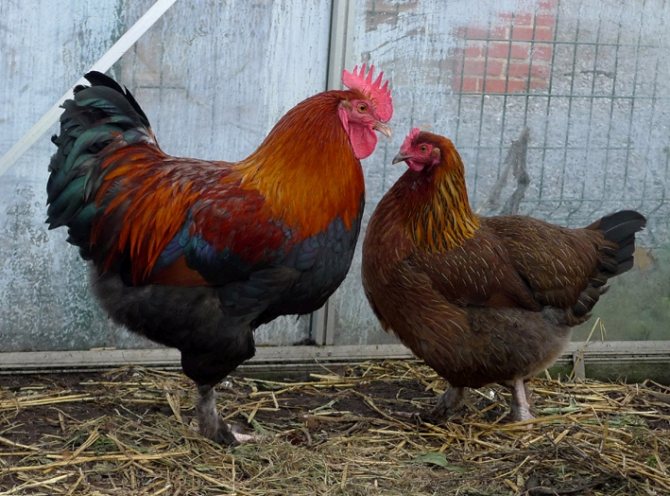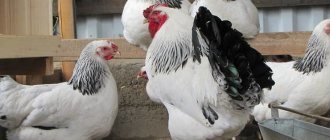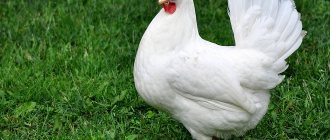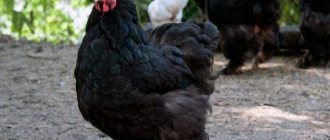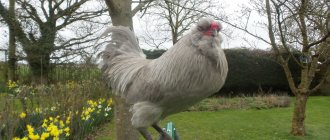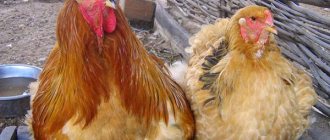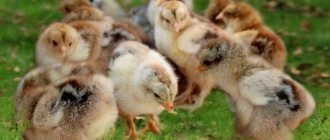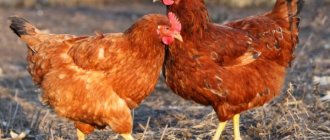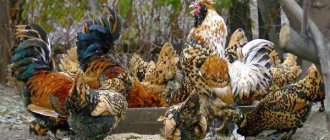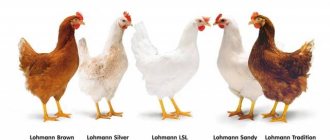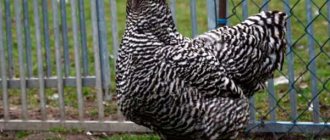In recent decades, breeders have been developing new breeds of chickens that are hybrids. Such birds acquire their positive qualities from their "parents". The main thing that is required from such hybrids is an increase in productivity (meat and egg).
Chickens Legbar are one of the best such hybrids. They belong to the autosex variety with improved productivity of meat and eggs. Legbar (breed of chickens) have a peaceful character, they behave more calmly than many representatives of other breeds, laying hens are distinguished by high egg production - all these positive qualities attract the attention of poultry farmers from around the world. However, it should be remembered that any hybrids and breeds of chickens should be grown correctly, otherwise the productivity of these birds may decrease, and other indicators will be worse than those stated in the description of the breed.
Many breeders noted that the Legbar hybrid has excellent decorative qualities, and that the laying hens lay eggs of an unusual blue color. However, poultry farmers often faced difficulties in breeding these chickens, so they later refused to raise Legbar, but in vain. After all, if you know all the nuances of breeding and care, you can get a large number of tasty eggs of the original color, as well as delicious gourmet meat during slaughter.
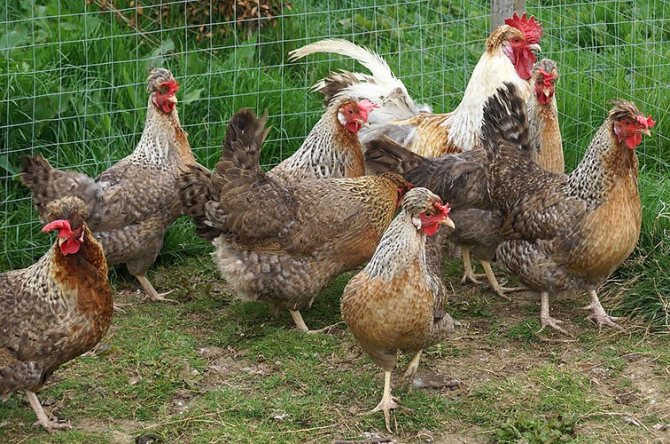
Legbar - breed of chickens
Description of the breed
The description of the Legbar breed is as follows: Legbar roosters are powerful birds. They have a wedge-shaped body, a wide chest, and a long and flat back. The tail is moderately full, sloping at an angle of 45 degrees. The wings are tightly pressed to the body. The head is small, the comb is erect, bright red with 5-6 clear teeth, earrings of a light shade, in chickens, the comb has a leaf-like shape with 6 teeth, not always erect, it can bend to one side from the middle. The eyes are bright orange. Legs are yellow, thin but strong, with 4 toes widely spaced.
The plumage of birds is soft, silky. A distinctive feature of the legbar is a crest on the head. Therefore, they often say about the breed "crested legbar". Look at the photo to see how the representatives of the Legbar breed look.
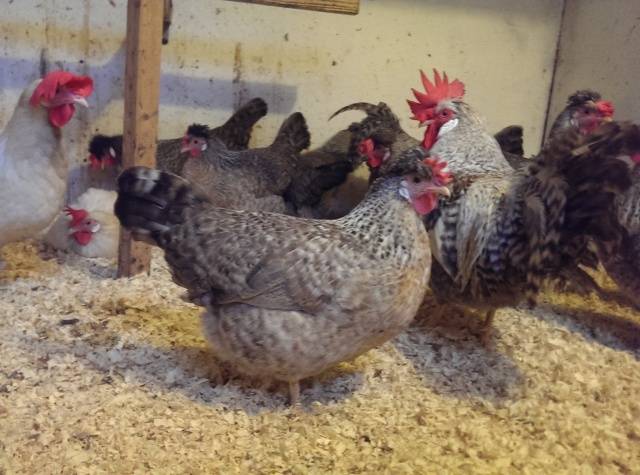

In total, depending on the color, three varieties of legbar are distinguished - golden, silver and cream. Today, the most common is the creamy legbar shade, which combines silvery gray and pale gold shades to create an overall creamy color. In cockerels, clear stripes stand out; in chickens, they are absent. In addition, the plumage of Legbar chickens is darker, with a predominance of brown shades: from pale cream to salmon-chestnut with a bright edging of the feather.
Legbar chickens have a pronounced autosexism.
Attention! At day old, females can be distinguished by a dark brown stripe passing through the head, back and sacrum.
In males, the stripe is blurred and mixed with the main background, in contrast to females, in which the edges of the stripe are clearly delineated. In the photo, you can completely distinguish between chickens and cockerels of the Legbar breed.
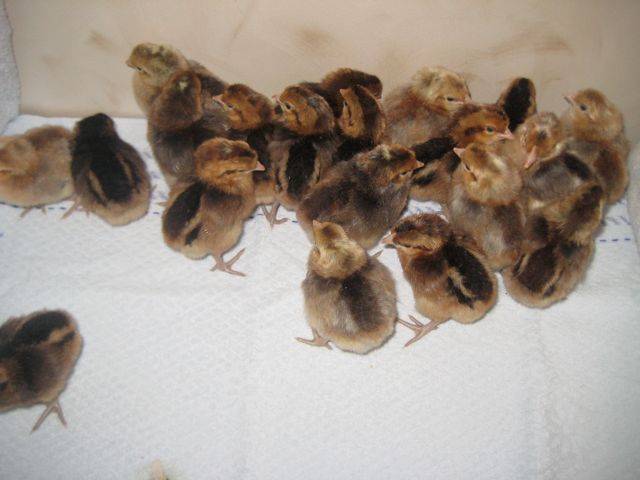

Legbars have a good disposition, you will not find them in a showdown with each other and other breeds. But the cockerels zealously watch their girlfriends, protect them and do not give offense.
Chickens of the breed in question are very mobile and love to walk.Therefore, when breeding them, it is imperative to equip a corral for walking. This will allow the chickens not only to walk, but also to find some food for themselves in the form of bugs, worms. Chickens of the Legbar breed highly desirable food of animal origin. And the walking method of keeping poultry saves on feed. In the summer, most experts recommend a minor supplement.
Chicken health
It has already been noted that the representatives of this breed have good immunity to diseases. Yet sometimes they suffer:
- from infectious diseases (colibacillosis, pasteurellosis, salmonellosis, Newcastle disease, smallpox and others);
- non-infectious (gastroenteritis, cloacitis, goiter atony, keratoconjunctivitis and others);
- from defeats by internal and external parasites.
Most often this happens when the requirements for the living conditions of the livestock are violated.
The most basic preventive measure to prevent ailments in Legbar chickens:
- cleanliness in the chicken coop;
- its systematic disinfection;
- vitamins;
- the freshest food and water.
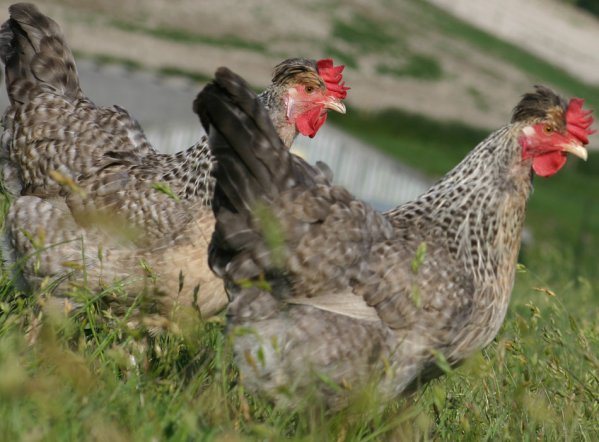

Productive features
The Legbar chicken breed has a meat-and-meat direction. For all the beauty of the external data, the productive abilities of the chickens did not suffer at all.
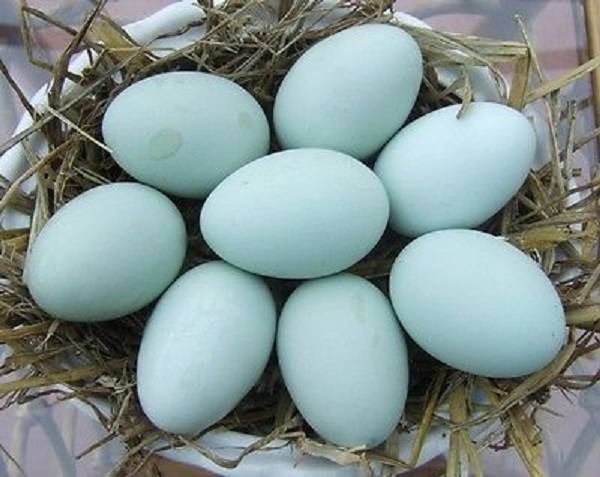

- Chickens lay eggs with strong shells of blue or olive color, weighing up to 60 g;
- High egg production is maintained for 2 years;
- Legbar chickens begin to lay at 4-5 months of age;
- About 220 eggs are produced per year;
- Live weight of legbar chickens reaches 2.5 kg, roosters 2.7-3.4 kg.
The qualities of the breed listed above have led to the fact that it has become quite popular.
Breeding
Chickens Legbara do not really cope with their responsibilities as parents. The males keep a close eye on the females as they hatch their eggs. But layers are not capable of long-term planting of eggs. So to breed chickens, you have to lay eggs in an incubator.
For this it is necessary to select small eggs. The shell must not be damaged in any way. During the incubation period, you will have to carefully monitor the turning of the eggs, the level of humidity and temperature.
Chicks are born viable. Within a day from the moment of birth, they can be distinguished by gender. Males have light-colored fluff, and a spot is located on the head.
But at how many months the chickens begin to lay eggs, this information will help to understand.
What the breed of black chickens looks like, and how it is grown, is described in great detail here.
It will also be interesting to know and see what the Pavlovsk chickens look like:
How is the maintenance and feeding of laying hens, and which of the hens are the best, this information will help to understand.
Content
Chickens Legbar are distinguished by their unpretentiousness in terms of care. Since the birds move a lot, they should be out for a walk during the day. To do this, you will need to make a corral for them. When building it, the farmer must take into account the weight of the chickens. For one bird of average weight, 0.5 m2 will be enough.
In order for the chickens to continue to provide you with eggs of an unusual color in winter, you should take care of the insulation of the chicken coop. This breed can only exist at positive temperatures.
A heater can be installed in the hen house, but only before that, create reliable protection against direct contact of the bird with the equipment. When arranging the floor in the room, do not use cement. You just need to tamp the earth and lay sawdust, 10-15 cm thick. Thus, it will be much warmer in the chicken coop.
What breeds of laying hens exist can be seen here with photos and names.
On the video - breeding chickens Legbara:
Feeding
The presented breed of chickens is very fond of blue food. You have to buy it in the store. Chickens do not like dark yellow and blue colors. So they shouldn't be in the feeders. You need to feed Legbar chickens no more than 3 times a day, since these birds are prone to obesity. As a result, fertility begins to decline, and the quality of eggs deteriorates.
If the weather outside is warm in summer, then the chickens graze all day and get their own food on their own. In principle, they may not need additional feeding. But to maintain high fertility, it will be possible to fill in special food purchased in the store in the evening. Its daily rate is 50-70 g. But grain, compound feed, mash are not suitable for this breed.
Various additives can be added to the water, thanks to which it is possible to increase egg production. But it is not recommended to use them too often and in large quantities. This can lead to vitamin deficiency, and then all your efforts will go to the spark. It is also worth paying attention to growing broiler chickens for meat.
Cons of the breed
When keeping the breed in private farms, it is necessary to keep in mind some of the disadvantages that are inherent in Legbar. Without taking them into account, effective breeding of the breed is impossible. The disadvantages of legbars include:
- Every 2 years, a replacement of the livestock is required, since egg production drops sharply after 2 years;
- Legbar hens have practically lost their incubation instinct. Some poultry farmers attribute this to the mobile nature of the Legbar breed. Nevertheless, breeders will have to attend to the purchase of an incubator;
- In the cold season, egg production decreases and may stop altogether. Therefore, in order to receive eggs even in the cold season, the poultry house should be insulated. It may be necessary to install a heater. The main thing is that the room temperature is above zero. At a temperature of + 15 + 17 degrees, you can count on the preservation of egg production in the same volume.
The latter drawback has a significant impact on the further spread of chickens of this breed in the difficult climatic conditions of Russia.
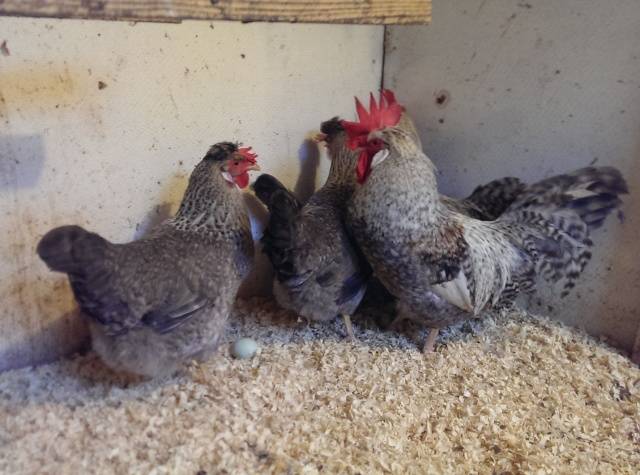

Important! Be sure to equip the house with drinkers that contain clean water. Clean air must also be supplied to the room.
Problems and common illnesses
The most common Legbar disease is toe deformity. The disease is transmitted at the genetic level. It can also develop from improper diet. To cope with the disease, you should change the diet and include vitamins and minerals, give a lot of fresh herbs. Congenital curvature can be seen in day old chicks. With age, the defect begins to bring discomfort. Such Legbars are rejected, and they are not allowed to breed.
Other diseases that cannot be treated:
- Marek's disease. Weakness and loss of appetite, weakened legs, discolored comb.
- Coccidiosis. Loss of appetite, loose stools, protruding feathers.
- Hemophilia. This is an intestinal disease. Mucus flows out of the nasal passages, the skin turns yellow, the comb and earrings turn pale. The disease infects internal organs and the brain.
When the disease manifests itself, individuals are slaughtered.
Features of the content
It is believed that the legbars are selective about food and will not eat what other chickens eat.
Make up the feed for the Legbar breed from 5-6 components. Then such a combined feed will be well eaten by the bird, and the chickens will receive all the necessary elements from food for life and high egg production.
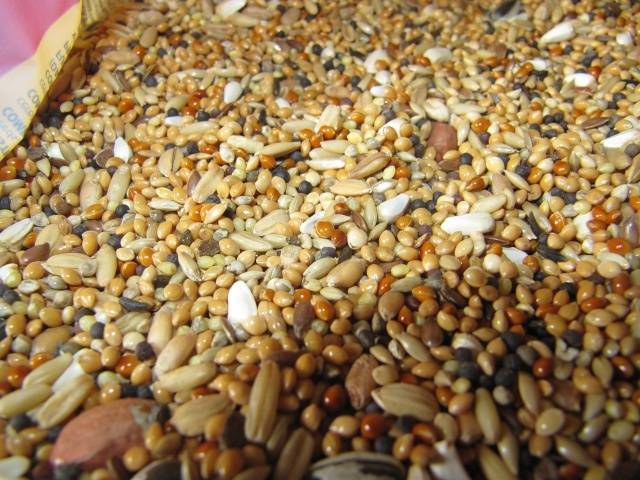

Important! No special blue food is needed to produce eggs. The blue color of eggs is a genetically fixed trait, so there is no need to add any special ingredients to the diet to give the eggs the appropriate color.
Pour shell, limestone, chalk, crushed egg shells into a separate container. In order for a hen to lay a quality egg, a lot of calcium is required, much more than it can get from feed.
In the summer, be sure to add greens and seasonal vegetables to the diet.If you give wet mash to chickens, make sure they are eaten right away. The remaining food spoils, turns sour.
Important! Legbars must not be overfed.
In young individuals, obesity leads to the fact that the onset of the egg-laying period is postponed. In adult chickens, the number of eggs laid is significantly reduced.
Laying hens consume almost 2 times more water than feed. Change the water 2-3 times in summer, less often in winter.
Fresh air is supplied through a conventional vent. You can also equip the supply and exhaust pipes, providing them with plugs, so you can regulate the air flow, which is especially important in winter in order to preserve heat.
The house should be well lit. Natural light enters through the windows; in winter, when the daylight hours are short, additional lighting is required.
Keep it clean. Change your bedding frequently. It is obligatory to do general cleaning 2 times a year, followed by antiseptic treatment.
The poultry house must be equipped with perches, nests, drinkers and feeders for chickens.
Make perches from rounded poles at the rate of 20 cm per 1 hen. At a height of 1 m from the floor and at a distance of 50 cm from each other. The most convenient placement of perches is in the form of a ladder, and not one above the other.
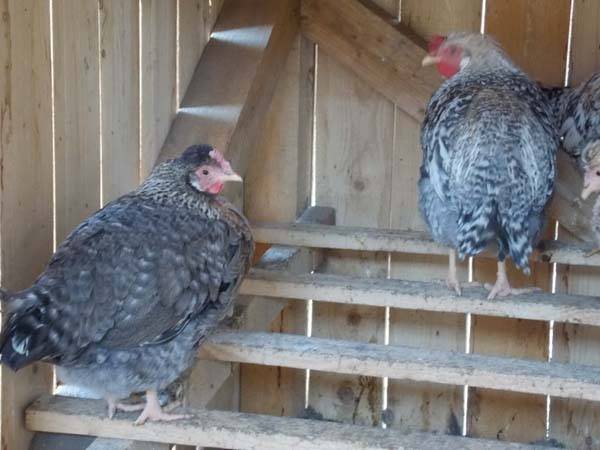

For nests, you can use ordinary boxes lined with straw or hay. Approximate dimensions 35x35 cm.
Where did the Legbars come from or where they came from?
In the company of traditional breeds of laying hens, Legbars appeared not so long ago - by the middle of the last century. Breeders Michael Pease and Reginald Pannett bred them in England.
I had a chance to try several options before getting birds with the desired characteristics. At first, striped Plymouth Rocks and “golden” Kempino cockerels were used. However, the result did not suit the scientists, and they somewhat changed the "foundation": Plymouthrogs and partridge Leghorns participated in the following attempts, and their offspring were crossed with white Leghorn and Araucan.
So, what was needed appeared: universal chickens of the Legbar breed with high egg production and tasty meat, attractive in appearance and viable.
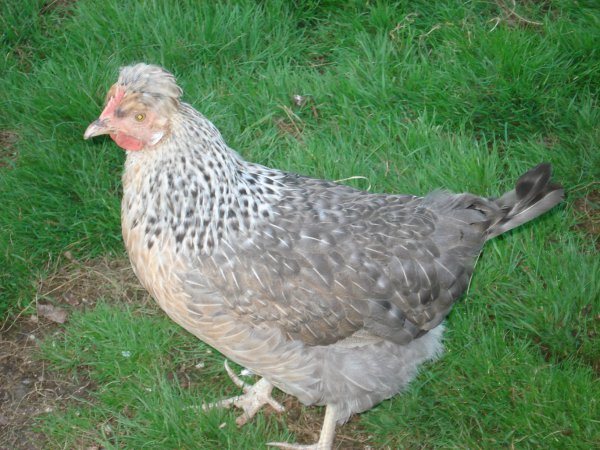

Interesting!
The ability to lay many eggs every year is not the only quality that has made the Legbar breed a favorite of poultry breeders. Their testicles are also very beautiful: round, with a bluish tinge of the shell.
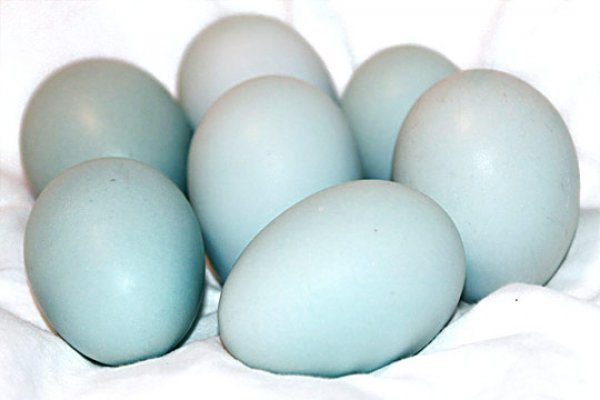

Testimonials
Yana
I read reviews about the unsuccessful purchase of Legbar hatching eggs in the Gene Pool, but still took a chance. The order was made at the end of August 2017, during this period they had eggs for 200 rubles. Absolutely all hatched, the chickens were strong, developed very quickly. Chickens fully fledged at 3 months, and began to rush at 7. I have 3 breeds in the same poultry house, roosters do not fight, they eat the same feed - granulated compound feed. I add vegetables and herbs to the main food.
Pavel
I bought Legbarov from a foreign catalog as early as 6 years ago, they came safe and sound (in an incubator for 20 eggs). Now I breed them myself, for myself and for sale. The meat of the breed is ordinary in taste without frills, and the eggs are beautiful - blue, about the first and second categories. Egg production is high - every year a hen produces 220–250 eggs. Chickens are quite mobile; they cannot be kept in close quarters.


